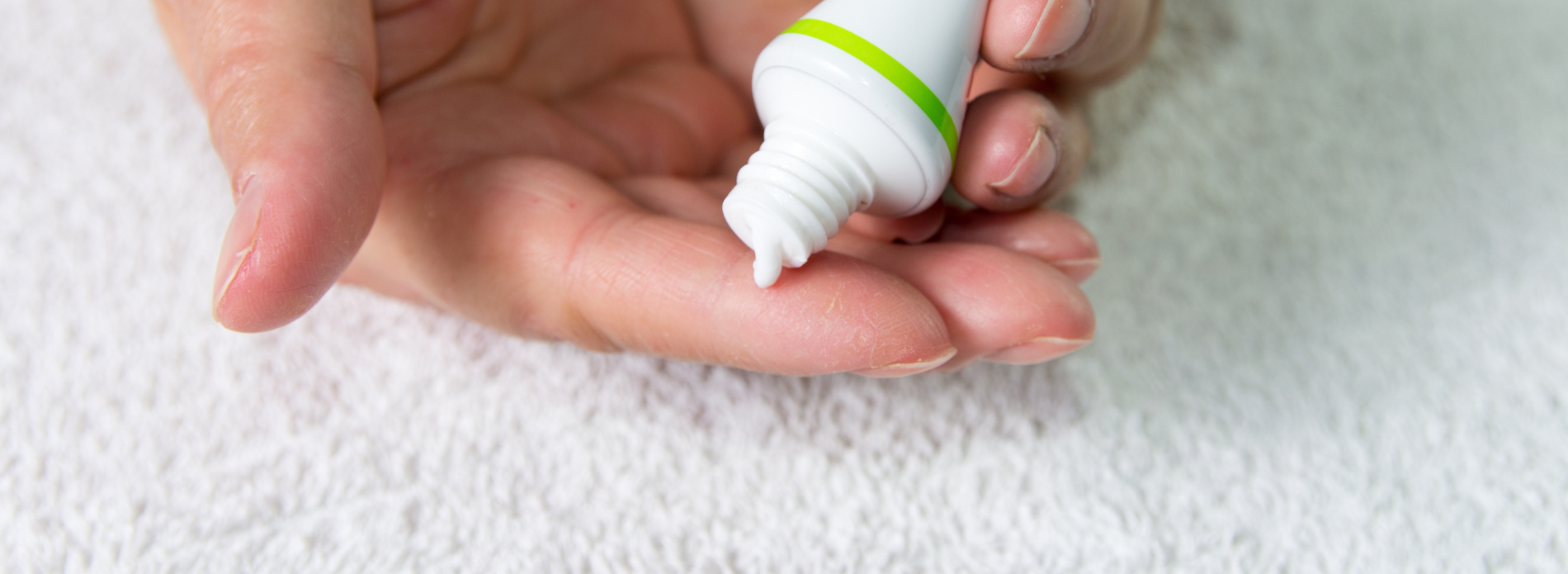Shingles is a viral infection that results in a painful rash, caused by the reactivation of the virus that causes chickenpox, known as the varicella zoster virus.1
Shingles is characterised by a red skin rash that causes pain and burning and generally presents itself first with flu-like symptoms:
- headaches,
- fever,
- and nerve pain.
Pustules will then form after a few days that gradually crust over, usually over a 5 to 7-day period.
The blisters tend to begin on the abdomen or torso and will be limited to one side of the body. The virus can persist for a couple of weeks and whilst it is more common to see the blisters on some areas of the body, as above, they can also be apparent on other areas such as the face, eyes and genitals.2
Is shingles contagious?
Whilst you cannot spread shingles to another person there is a potential that you could pass on the chicken pox virus to someone, if they have not previously had this infection.
Due to this, if you have shingles it is best to avoid:
- people with a weakened immune system,
- babies less than 1 month old (this does not apply if you are the baby's mother, as they should protected by your immune system),
- and those who have not had chickenpox before; this is especially important if they are pregnant.
If you have shingles, you're contagious until the last blister has dried and scabbed over.3
Treating a shingles rash
As the pustules scab over it’s important to try to leave the scabs intact as this can cause a bacterial infection to occur, the virus to spread and can also cause the area affected to scar more.
This can be difficult to maintain but try to avoid knocking or scratching the scabs as they heal. The rash can take up to four weeks to heal.
Most people will not be left with scarring from the shingles infection, but if you are left with some scars then the marks are usually an angry red or purple colour at first, but this will gradually fade over a number of weeks and months.
Usually these marks have faded completely a year after the initial infection and there are some steps you can take to help the process along.
Tips to reduce likelihood of scarring
- Ensure good hygiene and no disruption to the skin surface as it heals.
- Protect the area from sunlight, which can darken the pigmentation, by applying high SPF sun creams when exposed to sunlight.
- Keep the skin well moisturised by using emollients, oils and creams containing ingredients such as Aloe Vera, Vitamin E, Vitamin C and other natural products.4
Unfortunately, however diligent you are in following these steps, some scars may still be left. If the scars are very unsightly you may wish to talk to your GP about whether further treatment could help and what options are available.
Depending on your circumstances they may refer you to a skin specialist (dermatologist) or plastic surgeon for certain types of treatment or surgery.
Be aware that some treatments may be classed as a cosmetic procedure and so may not be available through the NHS or many private healthcare plans.
Treatments for scarring
Scars are a natural part of the healing process and although they may never disappear completely, they are likely to fade over time. There are a few things that you can use to help minimise the appearance and impact these have on you.
Below is some information on some of the treatments that are available to help with scarring as per the NHS guidelines5:
Silicone gels or sheets
These can be used to help soften and flatten the appearance of a healing scar. These treatments can also assist to relieve any itching or discomfort you are feeling; you can speak with your GP, specialist or pharmacist about what the most appropriate silicon-based treatment may be for you.
Steroids
Steroids can improve a scars appearance through corticosteroid injections. Injections will need to be repeated a number of times with a break in-between treatment, to assess the bodies response.
To flatten the appearance of keloid scars (an enlarged or raised scar), steroid-impregnated tape can also be used; this will need to be prescribed by your GP or dermatologist.
Laser therapy (also known as light therapy)
Targets the blood vessels in excess scar tissue in an aim to reduce the redness. For pitted scars laser surgery/resurfacing may be used to stimulate collagen production to flatten the scar.
It is important to be aware that there have not been many long-term studies into the effectiveness and safety of this treatment, and it can be expensive, so do make sure that you are working with a trusted professional if you decide to try this treatment.
Cryotherapy
If used in the early stages, then this freezing technique which uses liquid nitrogen, can potentially help with flattening keloid scars. Please note that you may experience a lightening of the skin as a side effect of this treatment.
Dermal fillers/skin needling
These relatively common cosmetic procedures can help the appearance of scars by plumping up pitted scars/smoothing the surface of the skin. However, they can be costly, and treatment needs to be repeated to maintain any effect.
Surgery
In more extreme cases surgery may be used to make the scar appear more natural or less noticeable, for example by using a skin graft from an area of healthy skin to cover the damaged tissue. Surgery may also be used if the scar tissue is restricting your movement in any way.
We hope this has provided you with some information regarding your scarring, please do get back in touch or speak with your GP if you need any further guidance on treatments that might help.
References
- Shingles (herpes zoster) - British Skin Foundation
- Shingles - NHS
- Preventing the spread of shingles - NHS Inform
- Shingles home remedies - Healthline
- Treatment for scars - NHS















